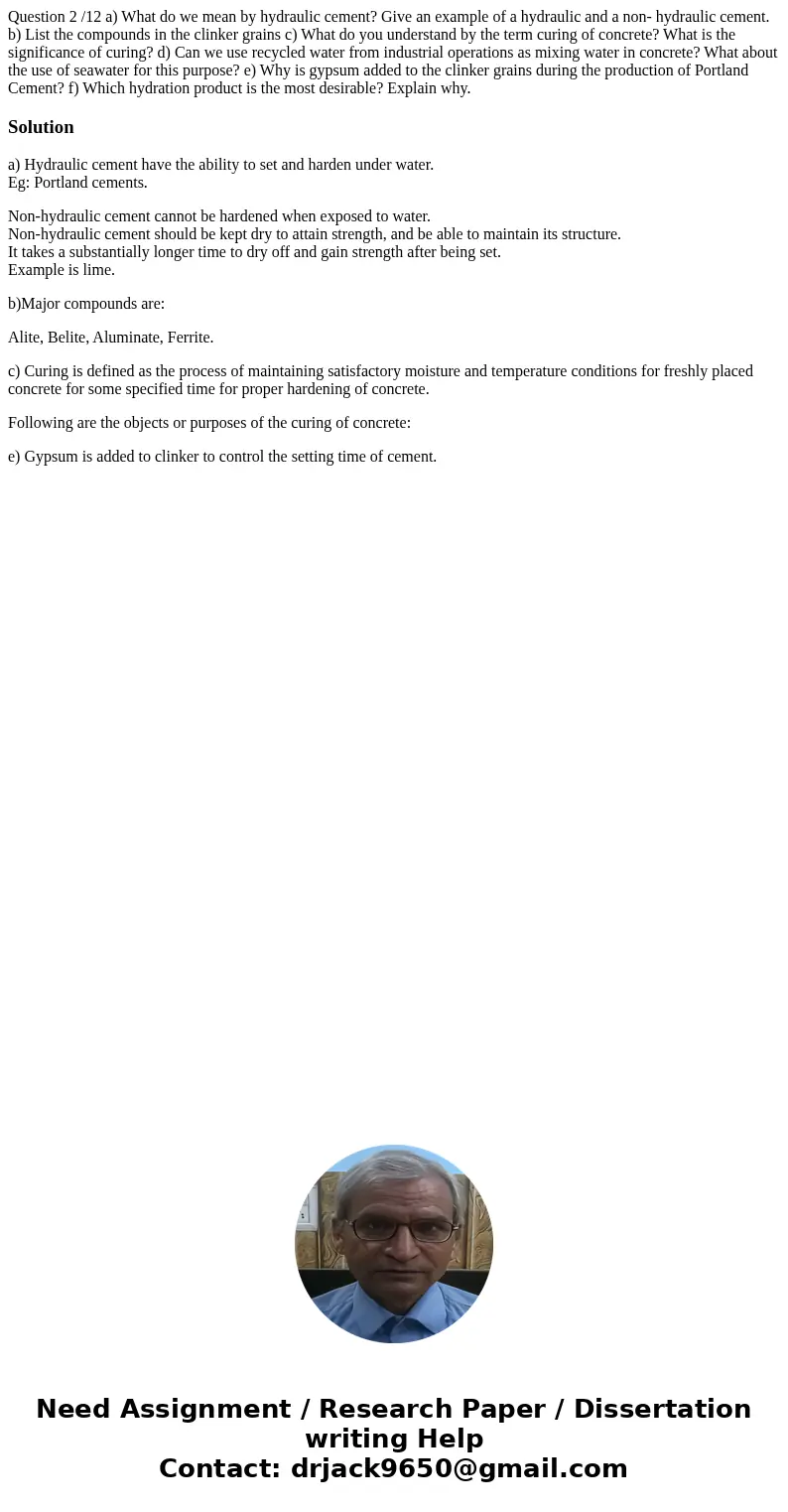Question 2 12 a What do we mean by hydraulic cement Give an
Question 2 /12 a) What do we mean by hydraulic cement? Give an example of a hydraulic and a non- hydraulic cement. b) List the compounds in the clinker grains c) What do you understand by the term curing of concrete? What is the significance of curing? d) Can we use recycled water from industrial operations as mixing water in concrete? What about the use of seawater for this purpose? e) Why is gypsum added to the clinker grains during the production of Portland Cement? f) Which hydration product is the most desirable? Explain why. 
Solution
a) Hydraulic cement have the ability to set and harden under water.
Eg: Portland cements.
Non-hydraulic cement cannot be hardened when exposed to water.
Non-hydraulic cement should be kept dry to attain strength, and be able to maintain its structure.
It takes a substantially longer time to dry off and gain strength after being set.
Example is lime.
b)Major compounds are:
Alite, Belite, Aluminate, Ferrite.
c) Curing is defined as the process of maintaining satisfactory moisture and temperature conditions for freshly placed concrete for some specified time for proper hardening of concrete.
Following are the objects or purposes of the curing of concrete:
e) Gypsum is added to clinker to control the setting time of cement.

 Homework Sourse
Homework Sourse